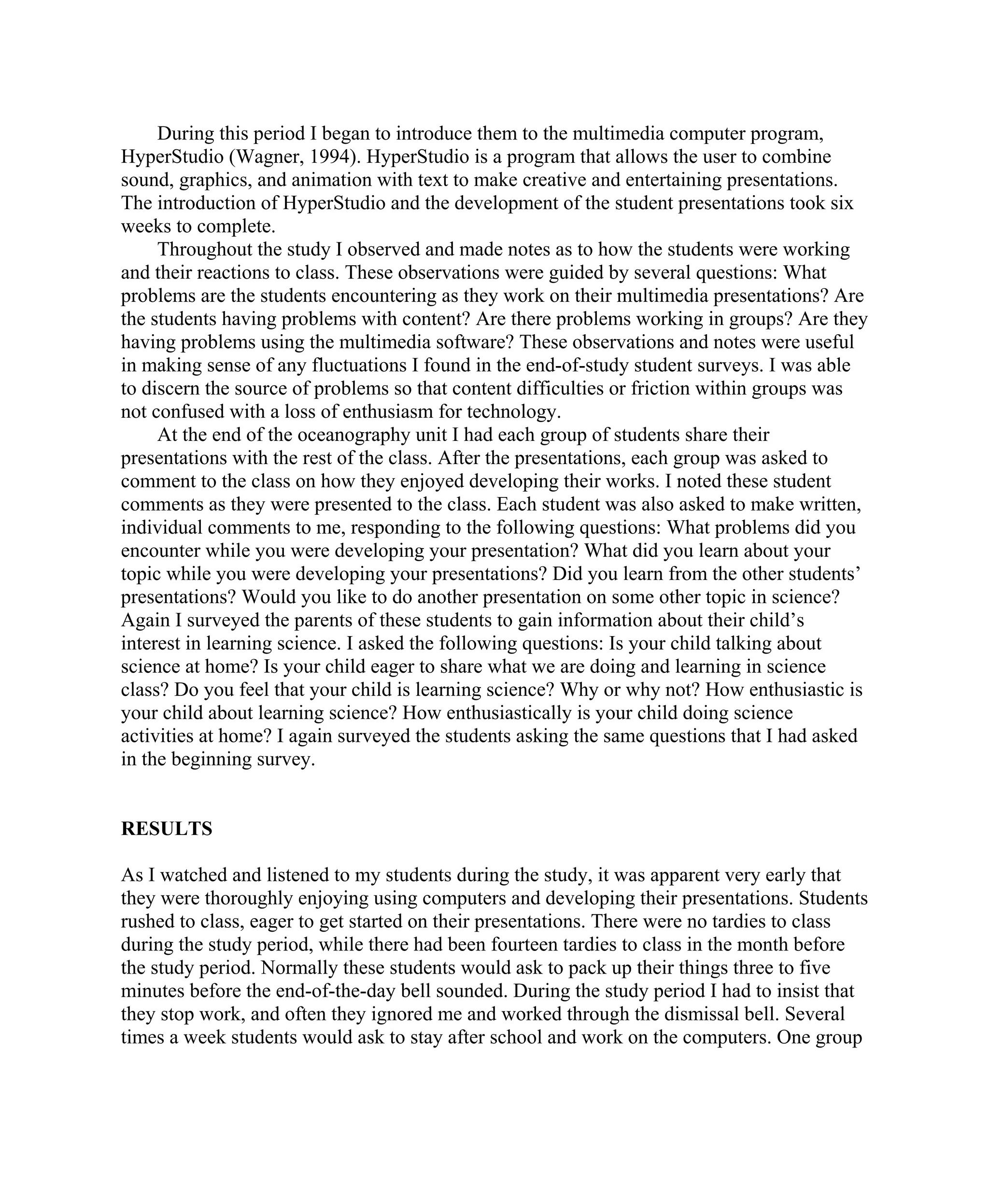This document summarizes a study on the effect of technology on students' enthusiasm for learning science. The teacher introduced multimedia technology into her middle school science curriculum over six weeks. She surveyed students and parents on enthusiasm at the beginning and end of the study period. During the study, students worked in groups to create multimedia presentations on oceanography topics using HyperStudio. The teacher observed students for problems and reactions. At the end, student presentations were shared and students commented verbally and in writing on their experiences developing the presentations and any problems encountered.
![Sample Action Research Report 1
Effect of Technology on Enthusiasm for Learning Science
Jane L. Hollis
Lake City Middle School
Lake City, Florida
ABSTRACT
The effect of technology on students’ enthusiasm for learning science (both at school and
away from school) was investigated. Pre- and post-student and parent surveys, student and
parent written comments, and teacher observations were used to record changes in enthusiasm for learning science during a six-week study period.
In this study, I investigated how the integration of technology into my middle school
science curriculum would impact my students’ enthusiasm for learning science. Enthusiasm
for learning science can be defined as the students’ eagerness to participate in science activities in the classroom, as well as away from school. My motivation for focusing on technology was twofold. First, I have had an interest in integrating technology into my students’
studies of science for some time. Secondly, the funding for technological equipment and
software recently became available. During the 1993–1994 school year, my school was
awarded a $115,000 incentive grant to purchase equipment and software and to train
teachers in the use of this software and technological equipment. One of the stipulations of
the grant was that the equipment and software must be for student use.
According to Calvert (1994), American education is a system searching for solutions.
Our children drop out, fail to sustain interest in learning, and perform below capacity. Some
have argued that television is the culprit. Others have argued that computers may be the
answer.
Today’s middle school students have grown up in a technological world with television,
electronic toys, video games, VCRs, cellular phones, and more. They are accustomed to
receiving and processing information through multi-sensory sources.
I wanted to bring technology into my classroom and incorporate it into my science
curriculum using multimedia computer presentations. Barbara ten Brink (1993) noted, “. . .
students look to us [teachers] to prepare them for an increasingly technological world.
Fortunately, with videodiscs, we are meeting the challenge by delivering curriculums in
ways that engage, motivate, and thrill our students.” In this study my students had an
opportunity to use assorted multimedia technology as they explored a segment of a middle
school science curriculum.](https://image.slidesharecdn.com/actionresearch-131206061125-phpapp02/75/Action-research-1-2048.jpg)







